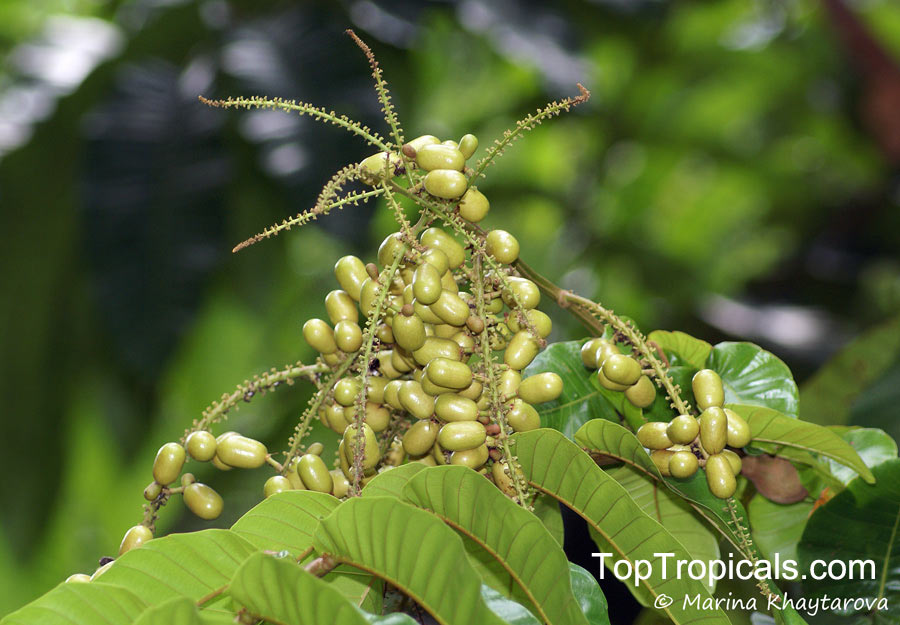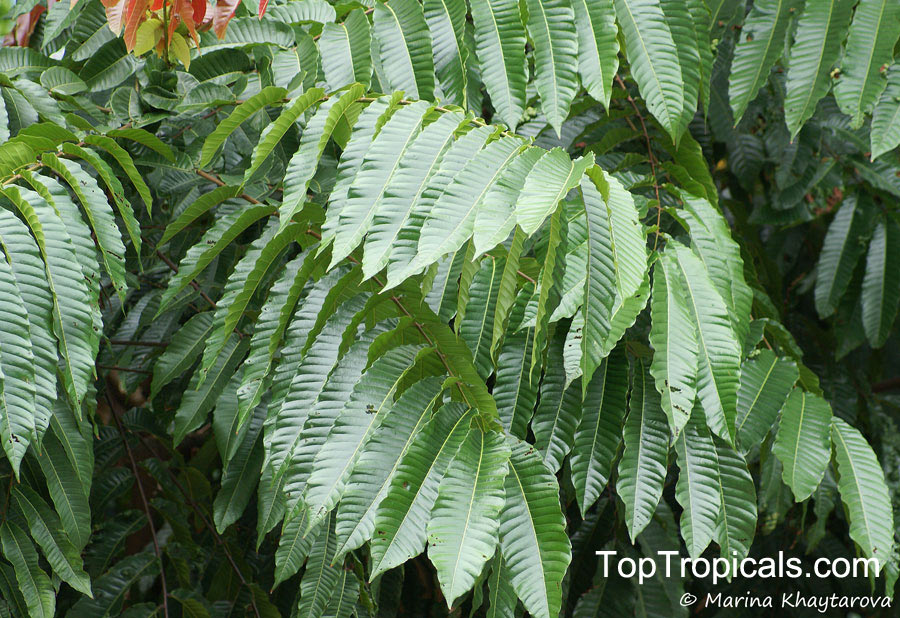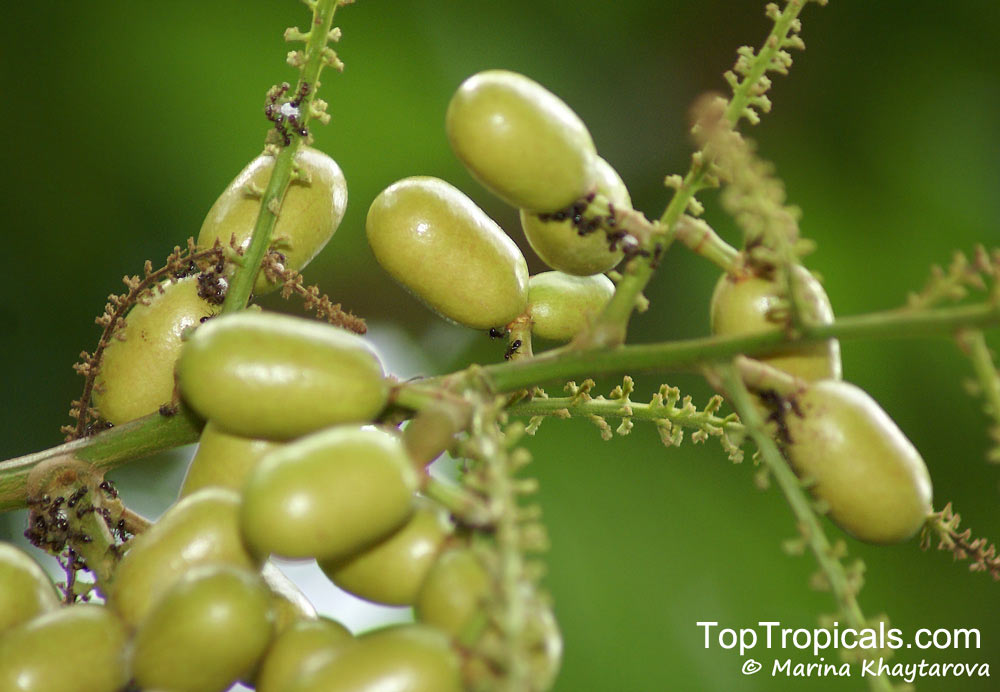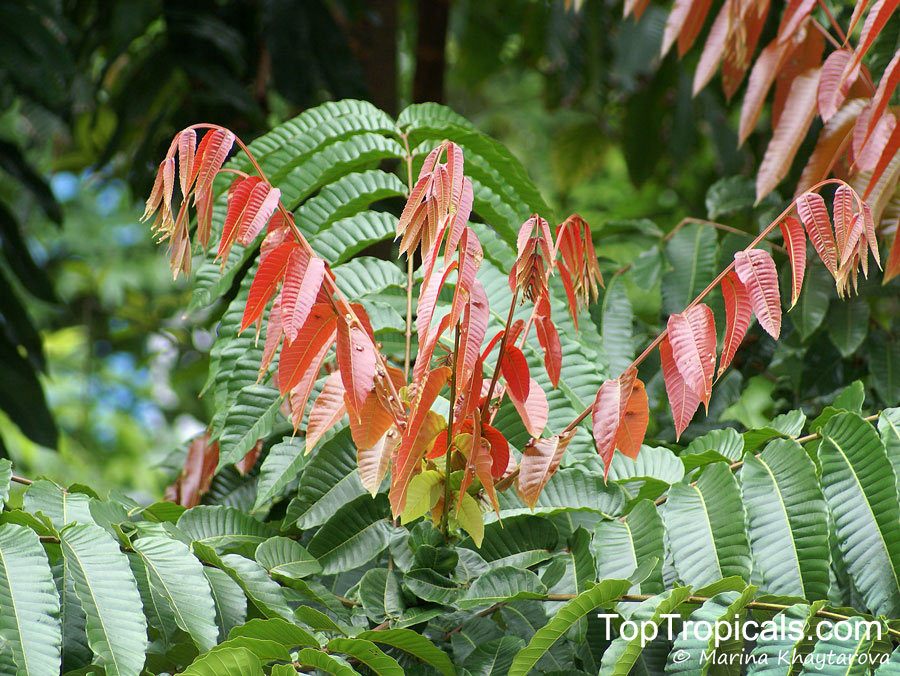Pometia pinnata (Fijian Longan)
Top Tropicals Plant Encyclopedia
Botanical names: Pometia pinnata, Nephelium pinnatum, Dabanus acuminatus, Dabanus pinnatus, Euphoria pometia
Common names: Fijian Longan, Island Lychee, Oceanic Lychee
Family: Sapindaceae
Origin: Southeast Asia






It is also known as the Fijian Longan due to its popularity in Fiji. Its native range extends from the Philippines, New Guinea, and the Moluccas to northern Australia.
Pometia pinnata is a versatile plant, useful for landscaping and as an ornamental tree. It can be grown in full sun or partial shade and prefers slightly acidic soil with lots of organic matter. It needs regular water throughout the growing season and moderate water during the winter. The tree can grow very tall and wide, usually exceeding 20 feet in height and width. Plants at the lower USDA Zones require potting and protection or can be grown in a light frame or green house during cold winter months.
Pometia pinnata produces a small, edible fruit with a thin, yellowish-brown skin and an off-white flesh. The smallish fruit is a good source of Vitamins A, B and C, and is used in traditional medicines and as a food source. The fruit tastes similar to a lychee, with a sweet-tart flavor. The fruits can be eaten fresh, made into jam, or used as a flavoring. Depending on the climate and growing conditions, the tree can produce up to 60 to 100 fruits per year.
In addition to its edible fruit, Pometia pinnata is also a valuable part of traditional medicinal practices in Southeast Asia. The leaves and bark can be used to treat fever, headaches, and skin conditions. The fruit antioxidant properties are also thought to have health benefits, and it is believed to help stimulate the immune system.



